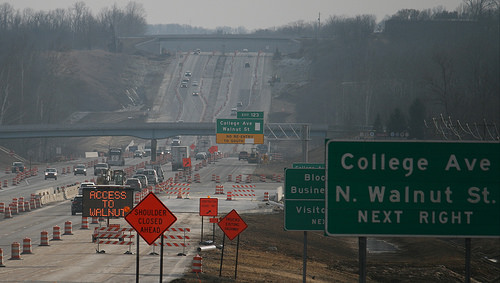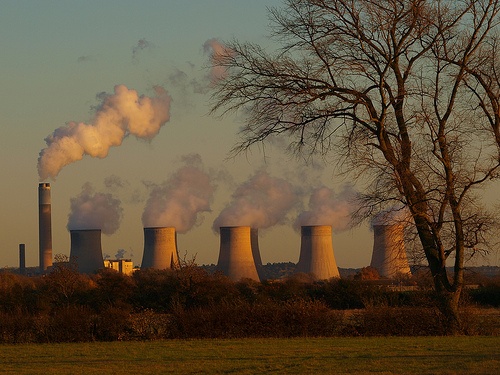The Environmental Protection Agency (EPA) has just issued rules that repeal and replace one of the Obama-era EPA’s signature efforts to reduce greenhouse gas (GHG) emissions. Effective September 6, EPA’s new “Affordable Clean Energy Rule” (ACE) will replace the “Clean Power Plan” adopted in 2015 but stayed by litigation (I wrote about the proposed CPP here). As anyone who has compared the Obama and Trump Administrations' approaches to climate change would expect, the new rule reduces the old rule’s requirements. It softens the mandates in the earlier rule, and offers states more flexibility to design their own efforts to control GHG emissions from existing fossil fuel-fired electricity generating units (EGUs) by eliminating CPP requirements that states consider operational changes “outside the fenceline” of the regulated EGUs.
Read MoreAudit, Compliance and Risk Blog
Tags: Environmental risks, Environmental, EPA, Greenhouse Gas, ghg
Reporting EHS Releases – Responsibilities Continue Except For Some Farm Emissions
Posted by Jon Elliott on Tue, Jul 16, 2019
Among its many provisions, the Emergency Planning and Community Right-To-Know Act of 1986 (EPCRA, in this case Section 304) requires facilities to report releases of specified hazardous and extremely hazardous substances, if the release exceeds an applicable threshold reportable quantity (RQ). The Environmental Protection Agency (EPA) administers these requirements, and has just approved an exemption for emissions from animal wastes at farms (this exemption tracks one amended into the Superfund law (CERCLA) in 2018). Other types of facilities and activities are still subject to these reporting requirements, so it’s a good time to review them.
Read MoreTags: Health & Safety, Environmental risks, Environmental, EHS, EPA, Greenhouse Gas, ghg, Hazcom
The Environmental Protection Agency (EPA) has completed a long review, and reaffirmed the primary National Ambient Air Quality Standard (NAAQS) for oxides of sulfur (SOX; usually measured as sulfur dioxide (SO2)). This is the first review of the primary SOX NAAQs since 2010 (primary standard – EPA did not review the secondary SOX NAAQS established in 2012).
Read MoreTags: Environmental risks, Environmental, EPA, Greenhouse Gas, ghg, SOX, CAA
More Jurisdictions Targeting Short-Lived Climate Pollutants
Posted by Jon Elliott on Tue, Dec 11, 2018
Although carbon dioxide (CO2) is the most common and most-discussed greenhouse gas (GHG), it is by no means the only one. And on a per-unit basis, it is by no means the most potent GHG either. Air quality agencies and climate change scientists also focus attention on so-called “short-lived climate pollutant (SLCP)” means an agent that has a relatively short lifetime in the atmosphere, from a few days to a few decades, and a warming influence on the climate that is more potent than that of carbon dioxide. Individual jurisdictions have addressed individual SLCPs, but comprehensive approaches have been limited.In 2014, California legislation assigned that state’s Air Resources Board (ARB) to adopt a SCLP Reduction Strategy (I wrote about the legislation and 2016’s draft strategy here).
Read MoreTags: Environmental risks, Environmental, Greenhouse Gas, ghg, climate change
United States Government Quietly Releases Dramatic New Recommendations For Combating Climate Change
Posted by Jon Elliott on Tue, Dec 04, 2018
While domestic climate politics in the U.S. and Canada generate hot air about the reality and urgency of climate change, climate science proceeds largely on its own pathways, and climate policies to reduce greenhouse gas (GHG) emissions are being proposed and developed by a wide variety of entities. On November 23 – often referred to as “Black Friday” by retailers and shoppers in the U.S., regardless of their attitudes about global warming – the U.S. government’s U.S. Global Change Research Program (USGCRP) delivered urgent recommendations for aggressive policies. This Fourth National Climate Assessment (NCA4) builds on last year’s Climate Science Special Report (which I wrote about here).
Read MoreTags: Business & Legal, Environmental risks, Environmental, Greenhouse Gas, ghg, climate change
EPA Proposes To Replace Obama-Era Rules For Coal Fired Power Plants
Posted by Jon Elliott on Tue, Oct 16, 2018
The Trump-era Environmental Protection Agency (EPA) has proposed to repeal and replace another of the Obama-era EPA’s signature efforts to reduce greenhouse gas (GHG) emissions. EPA has now proposed an “Affordable Clean Energy Rule”, to replace the “Clean Energy Plan” adopted in 2015 but stayed by litigation. The new rule softens the mandates in the earlier rule, and offers states more flexibility to design their own efforts to control greenhouse gas (GHG) emissions from existing fossil fuel-fired electricity generating units (EGUs) by eliminating Clean Power Plan requirements that states consider operational changes “outside the fenceline” of the regulated EGUs.
Read MoreTags: Environmental risks, Environmental, EPA, Greenhouse Gas, ghg
California Returns Statewide Greenhouse Gas Emissions to 1990 Levels
Posted by Jon Elliott on Tue, Sep 04, 2018
California is one of many jurisdictions around the planet attempting to reduce greenhouse gas (GHG) emissions to 1990 levels. Globally, this goal appears in the United Nations Framework Convention on Climate Change (UNFCCC) – signed in 1992 when the 1990 goal translated roughly into a goal to keep GHG emissions flat. California adopted its own 1990 goal in “AB 32” legislation enacted in 2006, by which time annual statewide emissions had increased significantly, and when business-as-usual emissions growth was projected to continue. As later quantified by the California Air Resources Board (ARB), AB 32 amounted to a commitment to reverse the state’s path, reducing GHG emissions by 15% instead of allowing them to rise by 15%. In July, ARB announced that the state has reached this 2020 goal, two years early.
Read MoreTags: California Legislation, Environmental risks, Environmental, Greenhouse Gas, ghg
Feds Formally Propose to Roll Back Future Auto Emission Standards
Posted by Jon Elliott on Tue, Aug 21, 2018
 The Trump Administration has taken the next step toward rolling back automobile standards intended to reduce greenhouse gas (GHG) emissions. On August 2, the Environmental Protection Agency (EPA) and the National Highway Traffic Safety Administration (NHTSA) issued a joint proposal to replace emission standards previously adopted to tighten emission standards during model years 2021-2026, captioned the “Safer Affordable Fuel-Efficient (SAFE) Vehicles Rule for Model Years 2021-2026 Passenger Cars and Light Trucks.” The agencies present a formal proposal to extend existing emission standards through those years, but also seek comments on several variations on this proposal.
The Trump Administration has taken the next step toward rolling back automobile standards intended to reduce greenhouse gas (GHG) emissions. On August 2, the Environmental Protection Agency (EPA) and the National Highway Traffic Safety Administration (NHTSA) issued a joint proposal to replace emission standards previously adopted to tighten emission standards during model years 2021-2026, captioned the “Safer Affordable Fuel-Efficient (SAFE) Vehicles Rule for Model Years 2021-2026 Passenger Cars and Light Trucks.” The agencies present a formal proposal to extend existing emission standards through those years, but also seek comments on several variations on this proposal.
Tags: Environmental risks, Environmental, EHS, EPA, Greenhouse Gas, ghg, CAA, Transportation
EPA Proposes to Rescind Last Administration’s Long-Delayed Accidental Release Prevention Revisions
Posted by Jon Elliott on Tue, Jul 17, 2018
In the last week before President Obama left office, the Environmental Protection Agency (EPA) completed a multi-year review of its Accidental Release Prevention (ARP) program for toxic catastrophe prevention, and adopted significant expansions of ARP requirements (I wrote about them here). EPA proposed ARP revisions in March 2016 (I blogged about them here). Then, when President Trump took office, EPA reversed course, repeatedly deferring the effective date of those revisions while the agency reviewed them. In May 2018 EPA completed its review, and published a proposal in the Federal Register to rescind almost all these expansions and return ARP requirement to those in place before 2017. EPA also included an alternative proposal that retained a few more elements, and requested public comment on both versions no later than July 30, 2018.
Read MoreTags: OSHA, Environmental risks, Environmental, EPA, Greenhouse Gas, ghg, Hazcom, effluent, mact
EPA Promulgates “Back-to-Basics” Process for Reviewing Air Quality Standards
Posted by Jon Elliott on Tue, Jun 26, 2018
On May 9, Environmental Protection Agency (EPA) Administrator Chris Pruitt issued a policy memo recasting his agency’s basic approach to review and revision of national ambient air quality standards (NAAQSs) – EPA’s broadest and most basic targets for national pollution levels. He entitles it a “Back-to-Basics” Process for Reviewing [NAAQSs]”, echoing the phrase he used last year to recalibrate the agency’s relationships with the public and its various stakeholders. (I blogged about this general policy here).
Read MoreTags: Environmental risks, Environmental, Greenhouse Gas, ghg, CAA, mact









